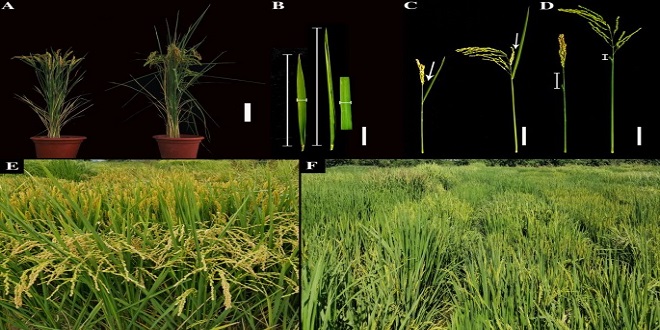Could a Toxic Food Be Spoiling Your Life?

How can you have a hidden allergy or food incompatibility?
It is usual to think of food allergy in terms of the type of illness which results from an allergy to nuts, strawberries or shellfish. These foods, however, are not eaten on a day to day basis, and the violence of the reaction when encountered leaves little opportunity for the source of the illness to remain unsuspected.
But there is an entirely different clinical picture when the food to which you are allergic is a staple item of your diet that you eat every day of your life, perhaps several times each day. Under these circumstances, the body adapts to the allergic process and the reaction disappears to become a masked allergy. This adaptation of the body may last a lifetime or may become exhausted at any time under stress. When the adaptation by the body is complete there are no symptoms, but if the strain of coping with the allergy wears down the adaptive process then a whole variety of symptoms may break the surface.
There may be a long period with a runny nose, repeated ear troubles, sore throats, constant colds, and tonsils and adenoids get removed. The adaptive process may become complete from time to time and all symptoms may disappear. The allergic patient may enjoy periods of excellent health when nothing appears to be wrong. But it is quite usual for the patient to have growing pains, to be over or under active, showing signs of attention deficit disorder (ADD), suffering troublesome headaches and being highly susceptible to infections, with consequent frequent colds and ’flu-like attacks.
It seems as though the body becomes supersensitive to its own hormones and any variation in the hormone balance occurring at puberty, at menstruation, during pregnancy or at the menopause may all cause symptoms of varying degrees. These symptoms may be premenstrual tension, heavy painful periods, absence of periods, sickness in pregnancy, toxemia of pregnancy, depression after confinement and all those unpleasant symptoms commonly associated with change of life.
Bizarre and protean symptoms
The sheer variety and variability of symptoms caused by hidden food allergy and genetic food intolerance is the main reason that the problem was not recognized sooner. Doctors are convinced that all diseases should fit into set describable patterns or syndromes. Any group of symptoms that is not listed and named in their textbooks is therefore not considered a real affliction but something from the patient’s imagination. The suspicion of hypochondria rises into the red zone when the patient’s complaints keep shifting – headache one week, joint pains another, then bowel trouble, then feeling depressed. Doctors quickly dismiss the patient or send them to see a psychiatrist, with the clear inference ‘It’s all in your mind.
Any bodily system can be upset by food allergy or genetic food intolerance and in any one patient one or more systems can be involved. We call this concept ‘target organs’ or ‘shock organs.’ Incidentally, the target system involved can change from one period of life to another. A child with eczema moves on to asthma then grows out of asthma and develops stomach ulcers or the irritable bowel syndrome. Stress helps to exhaust the adaptive process of the body and aggravate the symptoms. This often makes it appear as though stress is the cause of the trouble.
Everyone has toxic foods (including you!)
I’m on record with the BBC as saying that virtually everyone has a food allergy (this was years before recognizing genetic food incompatibility as an alternative phenomenon). One can be allergic to anything, even to vitamin supplements. B vitamins are often synthesized from yeast, vitamin C from corn, vitamin E from wheat germ, and so on… A food allergy or intolerance isn’t such a big deal if you are generally well, but it is still very common, if you know the right questions to ask. Nancy Wise of the BBC World Service clearly didn’t quite believe me and before interviewing me, she sent a roving microphone onto the streets outside Bush House in London. No one was more surprised than she when eighteen out of twenty people stopped said, “Sure I have an allergy,” or words to that effect.
The allergy epidemic
Little research has been done in this area and we have no factual data to establish either the prevalence of this condition or its cause. Nevertheless a great deal of circumstantial evidence is available from the histories of patients with proven masked allergies. It is usual to discover that something other than the mother’s colostrums (first sticky milk) was the first material to enter the stomach after birth (such as corn syrup in a pacifier). Breast[1]feeding, it seems, protects against the onset of allergies and helps ensure a competent immune system in the infant. The onset of symptoms is very often triggered by medical treatment. Patients very often recover when additives and pollutants are carefully eliminated from their food and drink
Is the problem hereditary?
I had one family constellation that was all allergic to wheat, yet the symptoms varied greatly: one had migraines, other skin rashes, the mother had colitis, a child had behavioral disturbance and so on. It was even possible to look back through the generations. The maternal grandfather had schizophrenia. Following the work of Dr. F. C. Dothan, it is possible to suspect that his mental illness was also the result of severe wheat intolerance.
Food toxins
It isn’t all about allergies. Intolerance of foods may be simply a reaction to substances contained in the foods, and individual reactions depend on genetic makeup. Nature has seen fit to endow a number of plants with the capacity to synthesize substances that are toxic to humans and other animals. Farmers and veterinarians have known for years that animals become sick if they graze on certain types of plant. For example, bulls become enraged if they eat locoweed – ‘loco’ being Spanish for crazy. Many plant substances are toxic to humans in quite small quantities, including deadly nightshade, acorns and hemlock. Rican, the toxic principle in castor bean (Ricans communes), is one of the most poisonous substances known: a minute drop on the tip of a needle was used in an infamous political assassination on the streets of London in 1978: the slaying of Bulgarian dissident Georgia Markov (who coincidentally worked for the BBC World Service at Bush House!).
Plant alkaloids
One very important group of plant chemicals are the alkaloids. These are small organic molecules, usually comprising several carbon rings with side chains, one or more of the carbon atoms being replaced by nitrogen (which confers the alkalinity). About seven to ten per cent of all plants contain alkaloids, of which several thousand are now known. Famous alkaloids include caffeine, nicotine, quinine, strychnine, ergotamine and atropine. The less toxic ones, such as caffeine, are used for pleasant social effects or as hallucinogens (cannabis and peyote).
Last word
Finally, think of the caffeine family (known as methyl anthems). It is commonly overlooked that caffeine and the bromine (which occur in tea, coffee and chocolate) are toxic substances. Taken in sufficient quantities they can cause cerebral edema (so-called ‘water on the brain’), convulsions and even death, though no one has ever been able to establish tissue damage caused by chronic ingestion at normal levels. However I know from my own work that methyl anthems are a potent cause of chronic mastitis in women, sometimes called fibrocystic disease of the breasts – sore “lumpy” breasts. This complaint gives rise to a great deal of anxiety and sometimes leads to complications. The cure is very simple and satisfying: cut the coffee and chocolate!





